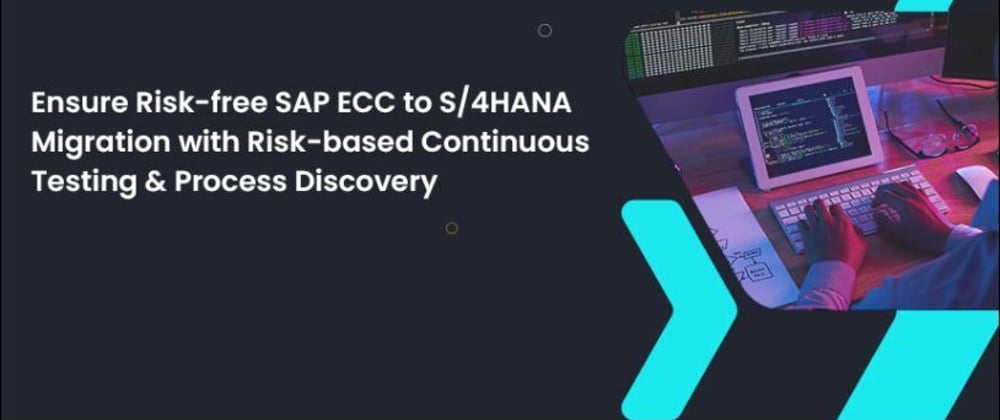With mainstream support for SAP ECC will going to end on 2025, customers using SAP ECC needs to migrate to SAP S/4HANA. By migrating to S/4HANA, customers can take advantage of enhanced user experience, new functionalities, features, real-time data, analytics, table simplification and flexible APIs. However, migration to S/4HANA is not a walk in the park.
Although, data modeling layer remains the same, lot of changes have been made at the technical layer. Enterprises shouldn’t treat SAP ECC to S/4HANA migration as an upgrade.
“S/4HANA is completely different from SAP ECC. Not only in look and feel wise, but under the hood has changed. You can consider the migration as moving from a gasoline engine to an electric vehicle.” – Ekrem Hatip, Senior Solution Architect at Syntax
The term migration can also be considered misleading since S/4HANA as a next-generation ERP allows to take care of everything from a single place – transactions, analytics, and forecasting.
“To get S/4HANA up and running, enterprises require clear vision consisting the design of processes and data, and the subsequent deployment activities around testing and data conversion.”— Ranjit Rao, Principal and US Finance and Enterprise Performance Leader at Deloitte
Challenges in SAP ECC to S/4HANA Migration
Migration to S/4HANA from SAP ECC requires several key decisions to be made. However, this can’t be an easy job since enterprises need to understand how actually their business processes are working in SAP ECC. “According to Brad Little, executive vice president and global head of application services at Capgemini, if you’re treating migration to S/4HANA as a technical upgrade then you might me undermining the value of S/4HANA. If you treat it like an upgrade, you’re basically taking all your junk and putting it in a new wrapper”.
Many SAP ECC customers have extensively customized their systems over the years. It can be very challenging for customers to convert those customizations into new features and introduce that in S/4HANA. With S/4HANA, enterprises can remove customizations and complexity to mitigate risks that come when you upgrade your system.
Since SAP is advocating that development should move outside the ERP into SAP cloud platform, existing SAP ECC customers will find it difficult to migrate the integrations. With S/4HANA, enterprises can use JavaScript or Python or Spring to build the services and APIs.
Since SAP ECC & S/4HANA are totally different in terms of technical aspects, enterprises migrating to S/4HANA needs to understand the impact of the new environment on existing configurations.
Addressing SAP ECC to S/4HANA Migration with Process Discovery & Risk-based Continuous Validation
To ensure seamless migration to S/4HANA, enterprises require test focussed migration strategy. Since S/4HANA is designed to deliver continuous innovation and features, enterprises need to understand the importance of the right test assets that can help them carry out regression testing. The right test automation asset for SAP ECC & S/4HANA should support the following points.
Process Discovery – Migration to S/4HANA is considered as an opportunity to clean up the mess by embracing standard business processes and procedures. For this, enterprises need to understand their existing business processes. Manual process discovery is painstakingly slow and unscientific. Enterprises should opt for AI-powered quality assurance framework that mines data across ERP, CRM, web applications, personal productivity applications (Microsoft Excel, Outlook, etc.), event logs and databases to create a virtual twin of existing processes. During migration, it will help enterprises to understand major process variations.
Change Impact Assessment – To ensure business continuity, enterprises need to understand the impact of migration from SAP ECC to S/4HANA. There might be a possibility that existing functionality might not work in new environment or customizations may not work. Some existing integrations might also not work in new environment. IT managers, System Admins, & Technical Architects need to understand how new instance impact their existing processes. So, always select a test automation framework that works in both SAP ECC & S/4HANA and provides you real-time change impact assessment.
Risk-based Test Recommendations – As its commitment towards innovation, SAP rolls out frequent updates. However, test everything is not a viable solution nor it ensure adequate coverage after every update. Select a SAP test automation
framework that recommends test cases based on the highlighted risks to deliver adequate coverage. It will help in keeping short testing cycles.
End-to-End Integration Testing – Test automation platform
should help enterprises to validate multiple technology stack including APIs, legacy apps, web, & mobile technologies. The automation framework should be scaled as per changing requirements and can be integrated with continuous test management tools like JIRA, Jenkins and Bamboo.
Autonomous Healing – Maintaining test scripts is still painful for test engineers. Pick the SAP test automation platform that helps in reducing maintenance efforts by automatically finding the changed elements and rectifying them without requiring human intervention.







Top comments (0)